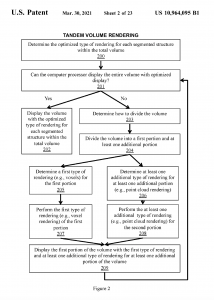To overcome nausea via a Soldier-specific 3D rendering algorithm
USA, July 27, 2023/EINPresswire.com/ — U.S. military forces have fought in tremendously diverse operations – everything from the Normandy landings on D-Day to the Michelin Rubber Plantation in the Vietnam to the complex caves of Tora Bora, Afghanistan to urban warfare in Fallujah, Iraq.
PEO Soldier seeks “innovative solutions to the Army’s equipment requirements to ensure a versatile, expeditionary, agile, lethal, sustainable, and interoperable force capable of meeting and overcoming any challenge.” Towards this end, a key solution in the PEO Soldier program is the Integrated Visual Augmentation System (IVAS). The IVAS is an advanced augmented reality 3D headset developed to help the Soldier in training and in achieving overmatch in multi-domain operations.
The IVAS system will prepare Soldiers with “25 bloodless battles” before combat. The IVAS works with the Synthetic Training Environment (STE) and displays the One World Terrain (OWT), a virtual representation of the physical earth, as well as virtual objects within the scene. In an IVAS training session, a Soldier could be running, ducking and performing rapid head turns while on high alert. Since the human eye can see at a frame rate of ~ 60 Hz, some experts advocate for rendering at a frame rate of 90 Hz. To generate a realistic training environment, the IVAS system must render large complex scenes.
A well-known source of nausea is a lag for the rendered left and right eye images of the virtual 3D world to appear. The IVAS program has faced a major technical challenge because it needs to render large complex 3D datasets in high fidelity to create the virtual world and must do so with a rapid frame rate. Unfortunately, many Soldiers who have worn the IVAS have reported nausea. Simply put, the IVAS must overcome these negative side effects in order to have a successful product in both training and combat.
TPMI has thought long and hard about this question and fortunately has developed a novel solution. US Patent 10,964,095 provides a methodology called “tandem 3D rendering” designed specifically for the Soldier, which divides a generated 3D volume and renders a first portion of the divided volume differently than a second portion of the divided volume. This process will significantly reduce lag and prevent lag-associated nausea. Consider how this system would significantly improve the IVAS.
In the STE, a Soldier is in a mountainous region of the OWT engaging two virtual enemies and is rapidly alternating left-right head turns. TPMI’s novel strategy is to divide the scene into a first portion (the two virtual enemies, which are of critical interest to the Soldier in training) and a second portion (the remainder of the scene, which includes the virtual terrain and other objects such as virtual vehicles). The first portion (which is a small fraction of the total virtual environment) of the scene is rendered using a polygon mesh technique to yield realistic detail. The second portion (which is a large portion of the total virtual environment) is rendered using a point cloud technique. Since point cloud rendering is considerably faster than rendering the entire scene using polygon mesh, the lag and associated nausea will be cut.
Eliminating the negative side effects is critical for Soldier usability of the IVAS. TPMI has a platform of technology which, if integrated into an upgraded IVAS, would result in a superior system. TPMI aims to work with PEO Soldier to integrate this novel technology into the IVAS.
About the author: Dr. Robert Douglas is a West Point graduate who: fought as an Infantryman in Vietnam with US units and a Vietnam recon company; worked in a combat development agency; studied nuclear war in the Joint Chiefs of Staff; patrolled in the desert for the UN in the Middle East with Russian war planners; and developed a system to assist Air Force space exercises. After leaving the service he spent over three decades in the defense industry rising from manager to vice president working programs ranging from sensors and missiles for Air Force aircraft to rubbing shoulders with Army scientists; to Army helicopters and combat vehicles as well as rapid target acquisition (RTA), night vision goggles and weapon sights.
Dr. Robert Douglas
TPMI, LLC
email us here
![]()
Originally published at https://www.einpresswire.com/article/646448850/an-eleventh-major-improvement-to-the-integrated-visual-augmentation-system




![[Latest PDF] Transparent Ceramics Market Trends Across Globally | 2024-2030](https://img.einpresswire.com/medium/731757/transparent-ceramics-industry-s.jpeg)

